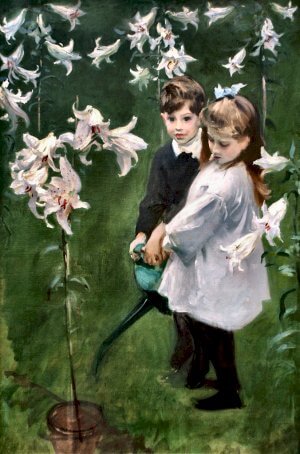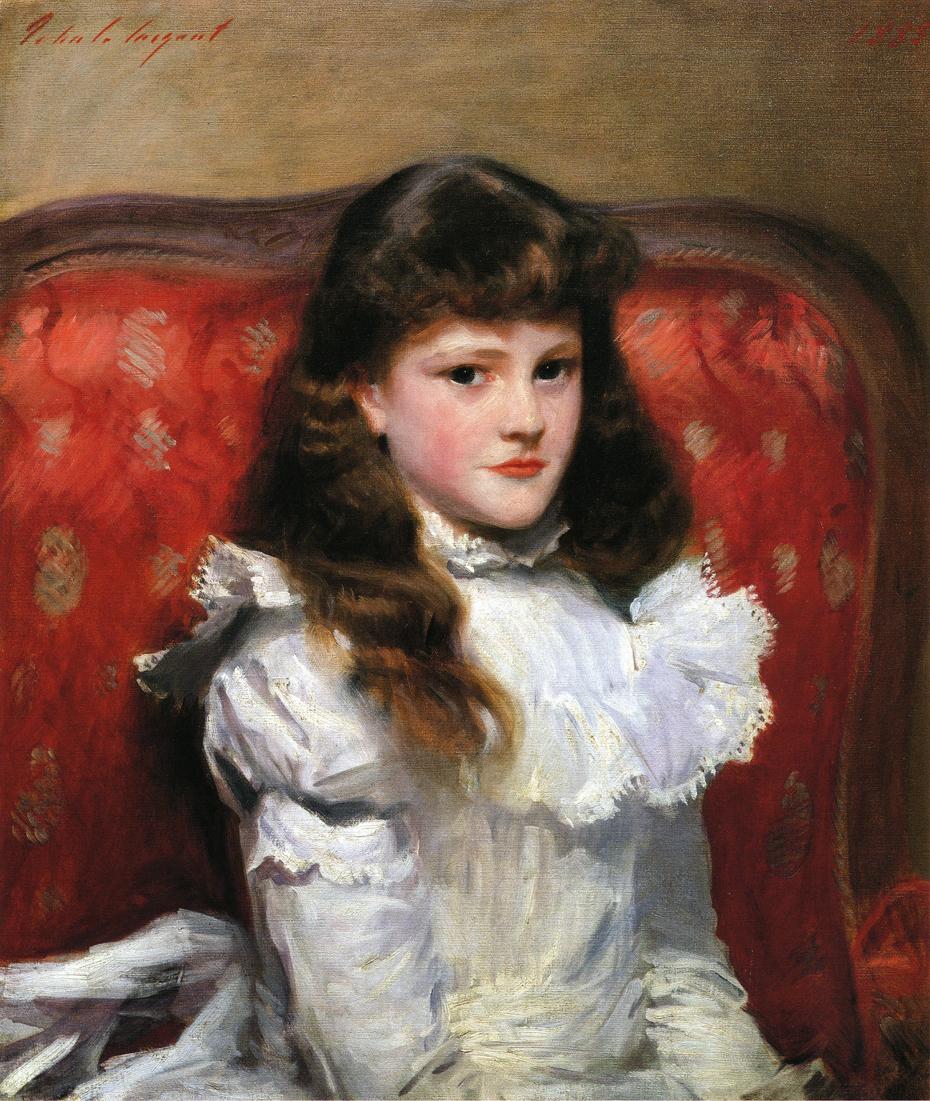Great artists come and go; however, it is those that still create discussion, debate, and reverence, that are truly considered the greatest of their time. John Singer Sargent is certainly one of those geniuses of his era.
Sargent, who lived from 1856-1925, primarily worked throughout Europe. Having trained in Florence, and working in London, Italy, France, the United States, and more, Sargent has a diverse spectrum of influences, as well as spectators. Primarily creating oil paintings and watercolors, Sargent is most notably known for his mastery in his portrait painting style.
According to “Picture and Text”, an essay of John Singer Sargent’s work, Henry James considers Sargent one of the greatest Impressionist artists of his time (possibly ever). James goes on to say that this great praise came with extreme criticism. Some considered Sargent an odd artist, whose work seemed to be “unfinished”; though I do not see it this way. I realize that when one is in a position of greatness, condemnation and negative assessments will be inevitable. Of all his works, Sargent is most notoriously critiqued for one of his earliest works, Madame X (1884).

Madame X(1884)
This specific piece was a portrait put on display at the Paris Salon, and received heavy, scandalous censure. Seeing this piece for my first time, I instantly realize it was way before its time. When I think of 19th century portraits my mind instantly goes to lavish, gaudy garments. The characteristics of such clothing includes modesty. Though this particular piece may seem a bit revealing for its time, I find it to be simply intriguing. The contrast of the pale skin color to the thick black dress, and the dark brown background, catches my eye right away. That, along with the model’s face looking to the right, brings about a sense of tentativeness and ambivalence. I now see why this particular work received such “hit or miss” assessments.
Furthermore, another specific creation of Sargent which similarly grabbed my attention is Young Lady in Black(1879). Another incredible portrait of a woman, this work happens to be notably more detailed and real. After looking at the portrait for some time I couldn’t help myself from thinking it to be so basic. But when I analyzed the background of the painting I realized what it meant to me. The young woman in the painting seems so elegant, and beautiful. In terms of her appearance she seems so graceful, and captivating. Having said that, when you look at her stature, her dress, and the room she is in, the work as a whole seems so amiss. The lady is dressed in a grim black dress, standing impatiently; she seems extremely fed up, and negative. The room she seems to be posing in looks rundown and repulsive. This entire piece of work turned into such a gloomy, eerie scene. It is then that the lone, single white flower that the lady is holding, creates the message in the setting. In such dark, miserable circumstances in life, there is always a bright light at the end of the tunnel. This portrait may have seemed plain and straightforward to some, however, it spoke wonders to me. When discussing this piece, James said, “The language of painting, the tongue in which, exclusively, Mr. Sargent expresses himself, is a medium into which a considerable part of the public, for the simple an excellent reason that they don’t understand it, will doubtless always be reluctant and unable to follow him.”

Young Lady in Black (1879)
After primarily being in Europe, Sargent started to do much work in America. It was there that he became very popular for his Watercolor paintings. Tommies Bathing (1918) was created with a voyeuristic viewpoint, which would usually act as a repellent to me in the arts. Instantly though, I related this work to the Biblical account of Adam and Eve.

Tommies Bathing(1918)
The two person character setting, the freedom of being alone in a field, and the oblivious nakedness, draws direct similarities to Adam and Eve. This painting made me question if Sargent had any religious motivation, or connection. I found this particular work very mysterious to me because it is done without much detail. Even more interesting is the fact that the shadows casted across the bodies are done so accurately. I wonder what the message is there. Tommies Bathing proved to be the coolest artwork of Sargent to me, due to the fact that it seemed so familiar, yet so puzzling.
John Singer Sargent seems to be the epitome of what a great artist should be. From the time Sargent was trained by his master, Carolus Duran, he knew what his style was. Sargent worked for his own approval, rather than for others. He truly was a genius in his field, and he did not let others inhibit the way he went about his work. As Henry James wrote, “Those who have appreciated his work most up to the present time articulate no wish for a change, so completely does that work seem to them, in its kind, the exact translation of his thought, the exact “fit” of his artistic temperament.”

Portrait of Carolus Duran(1879)






 Each day, thousands of illegal immigrants are smuggled across the border. They are shoved into gas tanks, squeezed into cargo boxes, and hidden in the backs of trucks.They are pressed into small boats by the hundreds just to be sunk off the coast. News coverage has made us all painfully aware of what Syrian refugees go through in order to enter Europe. Yet with all the focus of the Syrian refugees fleeing the Middle East, why haven’t we asked ourselves what happens to those who stay behind? In his article “Photo Exhibition Puts Syrian Refugees on the Seine,” Elian Peltier features
Each day, thousands of illegal immigrants are smuggled across the border. They are shoved into gas tanks, squeezed into cargo boxes, and hidden in the backs of trucks.They are pressed into small boats by the hundreds just to be sunk off the coast. News coverage has made us all painfully aware of what Syrian refugees go through in order to enter Europe. Yet with all the focus of the Syrian refugees fleeing the Middle East, why haven’t we asked ourselves what happens to those who stay behind? In his article “Photo Exhibition Puts Syrian Refugees on the Seine,” Elian Peltier features 

 camps. While it is easy to dismiss a suffering adult, a child in pain cannot be so easily ignored. He glamorizes their childhood in certain pictures by capturing the children while playing. It is easy for a viewer to relate to his own childhood in such pictures, and as such he recalls fond memories and develops a connection with the child in the photo. Later photos shock the audience by capturing the children at their low points- while performing physical labor or laying on the ground motionless. According to Reza, “[these] kids have lost the paradise every kid has.” Now in his state of shock, a viewer is more sensitive to the conditions refugees face and will be less likely to dismiss their rights as humans.
camps. While it is easy to dismiss a suffering adult, a child in pain cannot be so easily ignored. He glamorizes their childhood in certain pictures by capturing the children while playing. It is easy for a viewer to relate to his own childhood in such pictures, and as such he recalls fond memories and develops a connection with the child in the photo. Later photos shock the audience by capturing the children at their low points- while performing physical labor or laying on the ground motionless. According to Reza, “[these] kids have lost the paradise every kid has.” Now in his state of shock, a viewer is more sensitive to the conditions refugees face and will be less likely to dismiss their rights as humans.












Recent Comments